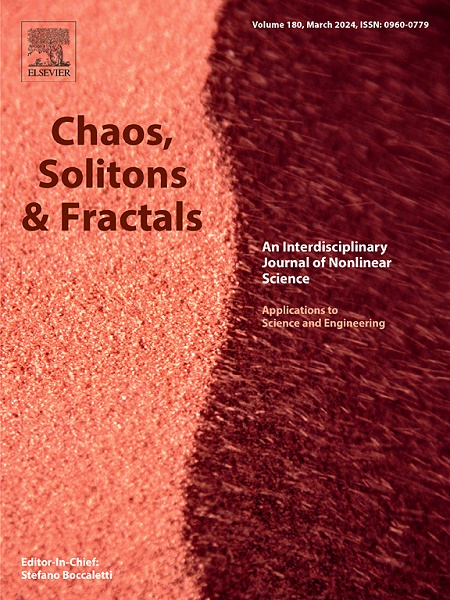基于拓扑增量快速傅立叶变换的设备故障诊断时频特征提取
IF 5.6
1区 数学
Q1 MATHEMATICS, INTERDISCIPLINARY APPLICATIONS
引用次数: 0
摘要
设备故障诊断是保证工业系统安全运行的关键。人工智能的发展使得数据驱动的故障诊断方法得到越来越多的应用。然而,这种方法往往需要大量的标记数据进行训练,并且容易受到噪声的影响。为了解决这些挑战,本文提出了一种使用拓扑数据分析(TDA)的新模型-拓扑增量快速傅里叶变换(TIFF) -用于设备故障诊断,利用TDA在拓扑空间连续变形后提取数据集几何特征的能力。首先,对于设备运行时间序列信号,通过计算原始信号两个连续窗口之间的拓扑Wasserstein距离,构建持久的同构波动序列,使其包含更多的故障模式信息。然后,将快速傅立叶变换得到的频域特征与对持续同调波动和原始信号序列进行统计分析得到的时域特征串联起来,得到原始信号的时频域特征。最后,提出了一种基于机器学习的设备故障诊断框架。通过将TDA方法提取的时频域特征输入,建立基于支持向量机(SVM)分类器的有监督训练模型,给出故障类型的识别结果。在两个公开可用的数据集上进行了不同条件下的测试,结果证明该方法在噪声设置和少镜头情况下优于三个最先进的基准测试。本文章由计算机程序翻译,如有差异,请以英文原文为准。
Topological Incremental Fast Fourier transform on time–frequency domain feature extraction for equipment fault diagnosis
Equipment fault diagnosis is crucial to ensure safe operation of industrial systems. The development of artificial intelligence has led to increasing applications of data-driven methods for fault diagnosis. However, such methods often require a large amount of labeled data for training and are tend to be sensitive to noise. To address these challenges, a novel model using topological data analysis (TDA)—-topological incremental fast Fourier transform(TIFF)—-for equipment fault diagnosis is proposed in this paper, leveraging the capability of TDA in extracting geometric features of dataset after continuous deformations of topology space. First, for time series signal of equipment operation, persistent homology fluctuating series is constructed by calculating the topological Wasserstein distance between two successive windows of the raw signal, which contains more condensed information on its fault pattern. Then, the time–frequency domain features of the raw signals are obtained by concatenating the frequency domain features derived from fast Fourier transformation and time domain features derived from statistical analysis on both of the persistent homology fluctuating and the raw signal series. Finally, a machine learning based equipment fault diagnosis framework is proposed. By feeding the time–frequency domain features extracted by TDA method, a model based on support vector machine(SVM) classifier after supervised training is established to give identification result for type of fault. The proposed method is tested on two publicly available datasets under different conditions and the results prove that it outperforms three state-of-the-art benchmarks in noisy settings and with few-shot.
求助全文
通过发布文献求助,成功后即可免费获取论文全文。
去求助
来源期刊

Chaos Solitons & Fractals
物理-数学跨学科应用
CiteScore
13.20
自引率
10.30%
发文量
1087
审稿时长
9 months
期刊介绍:
Chaos, Solitons & Fractals strives to establish itself as a premier journal in the interdisciplinary realm of Nonlinear Science, Non-equilibrium, and Complex Phenomena. It welcomes submissions covering a broad spectrum of topics within this field, including dynamics, non-equilibrium processes in physics, chemistry, and geophysics, complex matter and networks, mathematical models, computational biology, applications to quantum and mesoscopic phenomena, fluctuations and random processes, self-organization, and social phenomena.
 求助内容:
求助内容: 应助结果提醒方式:
应助结果提醒方式:


